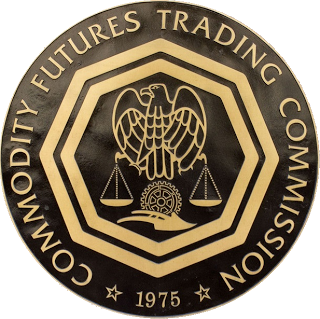
The recent CFTC concept release provided a thorough, detailed summary of the current state of electronic trading and risk controls, and asked for public comments with a set of 124 specific questions. The document itself is a significant effort, intended to serve as an impartial platform to stimulate discussion of current and best practices, and has received more than two dozen responses from industry participants.
However, the process reminded me of the following story about looking upstream for solutions to problems. Please bear with me as I may have embellished the story (just a bit) from its original script.
A prosperous village straddling a scenic river had a problem rescuing people who had fallen off an upstream bridge into the river. The number of rescues seemed to increase daily, and the villagers were up in arms demanding help for their over-worked rescue crews.
The village elders held a series of meetings and drew up a detailed plan of action. They would establish trained monitoring patrols, equipped with a new, elaborate alarm system that would quickly alert authorities when someone was spotted in the river. They would beef up the rescue crews with the newest, specialized equipment available and also keep additional rescue teams on call.

The elders, being very wise, also looked for ways to address the problem upstream at the source. So at the bridge, they planned to build entry gates to restrict access. Travelers would have to register to cross the bridge and, as part of the process, would have to prove that they were qualified to cross. The registration assured that if by chance they did fall in and needed rescue, they could later be identified and fined. Crossings would be limited both in frequency and in total number per day. Once you started to cross, if you changed your mind and abruptly turned back, you had to wait before you could cross again. “We only want serious travelers to make these trips, not inexperienced sightseers who might just cause accidents.”
Continue Reading →
Tags: Risk Management
 |
| Sweden celebrates National Day each year on June 6.* |
Somewhat unique among monarchies, instead of a family motto upon accession to the throne, the sovereign of Sweden will adopt a personal motto. This often serves as a national motto as well, and is printed on their 1 krona coins.
Upon taking the throne in 1973, the current Swedish monarch, King Carl XVI Gustaf, adopted the motto For Sweden—with the times. This motto reflected his desire for both himself and his country to constantly evolve to adapt to the modern world. When it comes to navigating the recent eurozone crisis, though, in many ways Sweden, along with the other Nordic countries, was ahead of its time.
Nordic countries were largely spared the crisis that unfolded in the eurozone over the last few years. In part, that is likely because the Nordic countries had already been through their own version a couple decades earlier, and had already made structural changes to their economies that allowed them to weather the recent storm. As the eurozone shows signs of stabilizing, the Nordic countries, and Sweden chief among them, are poised to see growth accelerate.\
Continue Reading →
Tags: Market Access, Trade Execution
It is a very rewarding experience when happy customers invite me to educate their peers on the benefits of using TT products. A collective of Trading Technologies customers at BTFDtv who I’ve come to know through Twitter recently gave me that opportunity. I am thankful to @LeftHash and @2yrflipper for inviting me onto the show “Guarding the Left Hash.”
JD Leman, aka @LeftHash, afforded me a great opportunity to engage and interact with his trading community. I took full advantage by walking the online crowd through new features in X_TRADER® 7.17 as well as some of our newer functionality and policies.
Most interesting to me were the questions presented by JD and his team. Although they are long-time users of X_TRADER, they were not familiar with some of the functionality that I as product manager take for granted. In actuality, this is not difficult to believe considering the wealth of functionality in X_TRADER. It’s not uncommon to see pockets of unique use cases where traders find what works and stick with it rather than experiment with new features. Everyone has their unique style. This forum presented a great venue to enlighten traders to little-known tips and tricks, some of which I detail later in this blog post.
Social media is certainly a powerful and heavily utilized tool in the trading community. Venues like LinkedIn and most noticeably Twitter are driving trading and general investment communities as both news sources and sounding boards. The use of Twitter as a news service and communication network continues to expand, and it has become an essential tool for the the prop community as well as buy-side and sell-side traders. In fact, my invitation to speak on BTFDtv was extended through Twitter after a member of the community saw one of my tweets and recognized that my perspective could be valuable to his peers.
JD asked that I document our discussion and make it available to his viewers. Read on for highlights of my interview with JD—or better yet, click on the video below to watch the segment in its entirety.
Continue Reading →
Tags: Trade Execution

The wonders of modern technology are miraculous. Who wasn’t amazed by the news of Voyager I’s departure from the solar system into interstellar space? This feat seems incredible with current technology, let alone with propulsion, guidance and communication systems designed and built almost 40 years ago. With the scientific and engineering capabilities of the modern world, what technology problem can no longer be solved through the concerted efforts of smart engineers?
Let me offer one: financial systems interoperability. “Blasphemy,” you say, “have you not heard of FIX protocol, that cure for the financial industry’s tower of babel?” Sure, I know about FIX (Financial Information eXchange), which includes version 5.0, introduced around seven years ago, as well as the versions firms actually use, namely FIX 4.2 and FIX 4.4, which are 13 and 10 years old respectively.
So what’s the problem with FIX? Before discussing it, I want to clearly state that FIX goes a long way toward enabling integration of financial systems. But it doesn’t go all the way. In a world where fancy toys and even some kitchen gadgets offer plug-and-play interoperability with the Internet, it seems ironic to me that systems used by multi-billion dollar banks and asset managers can take weeks or months to integrate using FIX. FIX gets you into the ballpark, but you have to expend a huge amount of time and effort to locate your seat.
Ambiguity is a major issue, resulting in applications such as back-office and order management systems using different ways of expressing the same thing. You might know that FIX messages are built around sets of tags, where each tag is used to define a required or optional message attribute. The problem is that a fair amount of latitude is granted in the interpretation and use of many critical FIX tags. So the process of integrating two “standard” FIX-enabled systems often involves clunky gymnastics, such as tag remapping, suppression and injection. And no FIX integration effort is complete without the conformance test process, which often involves a fair amount of trial and error to get things right. This requires a lot of time and money, and can result in brittle integrations that often don’t accommodate new financial instruments without additional work.
Continue Reading →
Tags: APIs
 |
| Dr. Ben Van Vliet |
Through the TT University Program, TT partners with universities around the world to help them prepare students for careers in the global derivatives industry. We provide our software, free of charge, to dozens of schools around the world, including the Illinois Institute of Technology (IIT).
IIT’s Dr. Ben Van Vliet has been using TT’s software as an educator for many years. In this guest post, Dr. Van Vliet looks at the impact automation has had on the markets over time and what it means to the next generation of finance professionals.
All of finance is automated. It’s virtually impossible to do anything in finance without turning on a computer and using some form of automation—Excel, databases, charting packages, APIs, execution platforms. The most obvious example of this is automated trading, where the entire life cycle of a trade, from exchange data feed to trading strategy to order management, happens inside the computer. Trading automation is a complex endeavor. It involves programming, mathematics, and strategic thinking about markets and technology. It’s a lot to learn, but this is what markets are about today.
An automated trading system consists of the rules for entry into and exit from a position or positions and the technology, both hardware and software, used to make them happen. These rules are a set of logical or mathematical operations that can be based upon qualitative, technical or quantitative research. If students want to actually build automated trading systems that execute trades on electronic exchanges (and they should), they need to learn how to create these rules and work with both real-time and historical data in code.
Continue Reading →
Tags: Algos & Spread Trading, APIs, Trade Execution, TT CampusConnect




